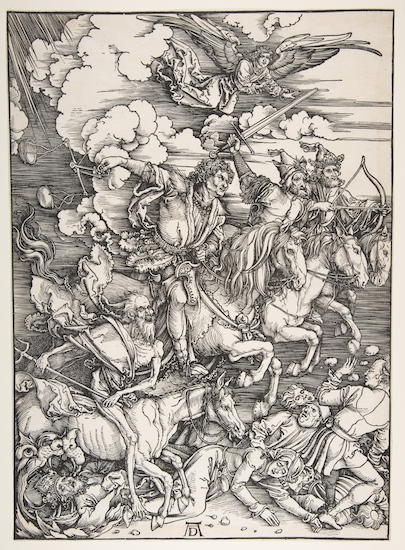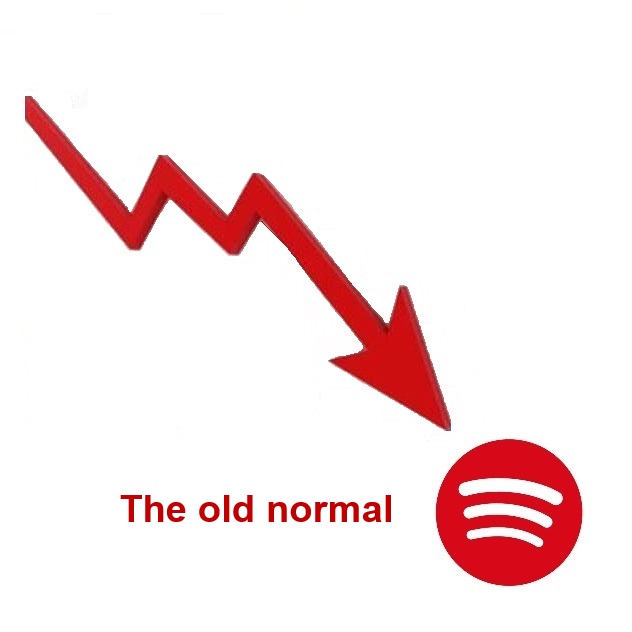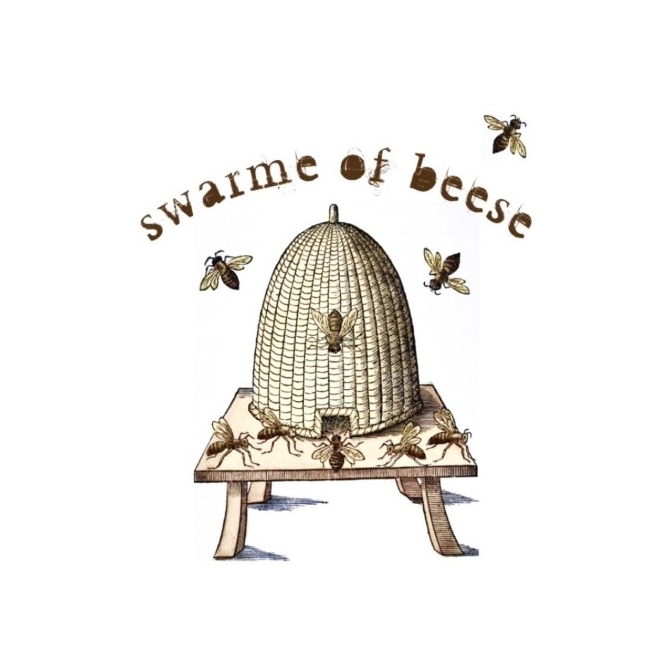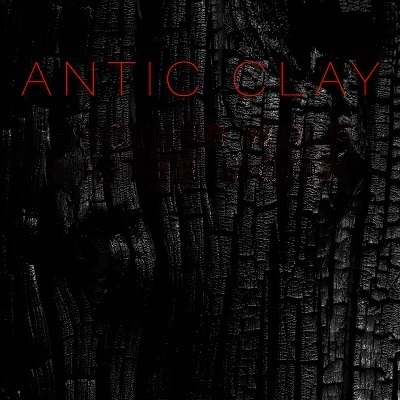 "And I heard, as it were, the noise of thunder / One of the four beasts saying, / 'Come and see.' and I saw, and behold a white horse". "The Man Comes Around" by Johnny Cash makes numerous Biblical references. Especially to the Book of Revelation which is derived from Greek, apokalypsis, meaning unveiling or revelation. The book is central in Christian eschatology and "the four horsemen" is a popular subject in art, film and music. According to the Book of Revelation (chapter 6:1–8) the four horsemen of the apocalypse appear with the opening of the first four of the seven seals that bring forth the cataclysm of the apocalypse. The first horseman, equipped with a bow and crown, rides a white horse, which symbolizes Christ or the Antichrist; the second horseman is given a great sword and rides a red horse, symbolizing war; the third carries a balance scale, rides a black horse, and symbolizes famine; and the fourth horseman rides a pale horse and is identified as Death. The main distinguishing feature of the four horses is their colour; white for conquest, red for war, black for famine, and pale for death. The four horsemen are armed with different attributes; conquest with a bow, war with a sword and famine with a balance scale. The fourth horseman, symbolizing death, doesn't have any attribute. The woodcut by Albrecht Dürer was made as one of a series of fifteen illustrations for a 1498 edition of the Apocalypse. In 1511, the plates were republished. The pale rider in the woodcut carries a sort of pitchfork or trident, despite the fact that he’s given no weapon in the Book of Revelation; he simply unleashes hell. The illustrations are very detailed. The colours of the horses are achieved by very distinctly drawing their various weapons and by placing them in order from background to foreground, slightly overlapping, so that they ride across the composition in the same order as they appear in the Book of Revelation. This places Death, a skeletal figure on a skeletal horse, in the foreground. "And I heard a voice in the midst of the four beasts / And I looked, and behold a pale horse / And his name that sat on him was death, and hell followed with him".
"And I heard, as it were, the noise of thunder / One of the four beasts saying, / 'Come and see.' and I saw, and behold a white horse". "The Man Comes Around" by Johnny Cash makes numerous Biblical references. Especially to the Book of Revelation which is derived from Greek, apokalypsis, meaning unveiling or revelation. The book is central in Christian eschatology and "the four horsemen" is a popular subject in art, film and music. According to the Book of Revelation (chapter 6:1–8) the four horsemen of the apocalypse appear with the opening of the first four of the seven seals that bring forth the cataclysm of the apocalypse. The first horseman, equipped with a bow and crown, rides a white horse, which symbolizes Christ or the Antichrist; the second horseman is given a great sword and rides a red horse, symbolizing war; the third carries a balance scale, rides a black horse, and symbolizes famine; and the fourth horseman rides a pale horse and is identified as Death. The main distinguishing feature of the four horses is their colour; white for conquest, red for war, black for famine, and pale for death. The four horsemen are armed with different attributes; conquest with a bow, war with a sword and famine with a balance scale. The fourth horseman, symbolizing death, doesn't have any attribute. The woodcut by Albrecht Dürer was made as one of a series of fifteen illustrations for a 1498 edition of the Apocalypse. In 1511, the plates were republished. The pale rider in the woodcut carries a sort of pitchfork or trident, despite the fact that he’s given no weapon in the Book of Revelation; he simply unleashes hell. The illustrations are very detailed. The colours of the horses are achieved by very distinctly drawing their various weapons and by placing them in order from background to foreground, slightly overlapping, so that they ride across the composition in the same order as they appear in the Book of Revelation. This places Death, a skeletal figure on a skeletal horse, in the foreground. "And I heard a voice in the midst of the four beasts / And I looked, and behold a pale horse / And his name that sat on him was death, and hell followed with him".
 Spotify made a small profit in 2021. Unbelievable. Anti-vaccinationism made it possible. In Q1 2022, we are back to the old normal again. Normal means losses. The web market analysts are so co-dependent that they don't even notice the loss, let alone reporting about it. Clearly, they don't know what is up and what is down in the income statement and balance sheet. They simply swallow the press release with lock, stock and barrel. "Nearly all of our key metrics surpassed guidance". Read carefully - "nearly all". Operating loss in Q1 2022 amounted to €6m ($6,2m). The Q1 press release focus on a "healthy revenue growth". This sounds good, but when revenues increase, so do costs. The accumulated deficit at the end of 2021 amounted to €3 220m ($3 689m). In any other business the top management would be whipped, keelhauled and then forced to walk the plank. The conversion strategy (by providing freemium, users will upgrade to premium) is not doing what it's supposed to. The share of paying users has never surpassed 50 percent. According to the Q1 report 2022 the company has about 182 million paying (premium) users (of a total of 422 million users), which makes 43 percent. The premium share has actually decreased in the last couple of years. Again, the analysts don't pay any attention to actual fundamentals. The Spotify Communication Departement are desperately trying to distract attention from the real problem. They have so much to answer for: anti-vaccinationism and conspiracy theories, fake streams and fake artists, secret deals, threatening free and independent research, playlist manipulations, pretending to be a value-driven employer etcetera. It takes a certain kind of scrupulousness to work for Spotify. Avoiding the subject is one thing, denial is another, but Spotify has taken euphemism to another level. The Q1 2022 press release is unintentionally ironic: "Overall, we are very pleased with the performance of the business and remain highly encouraged by the traction we are seeing." The co-founder and CEO Daniel Ek wants you to know that he believes in his life's work. He wrote on Twitter: "I’ve always been vocal about my strong belief in Spotify and what we are building. So I am putting that belief into action this week by investing $50M in $SPOT. I believe our best days are ahead..." With €3 220m ($3 689m) in accumulated deficit, this is a bold statement. The business share price have dropped with over 50 percent since the end of last year. Dream on.
Spotify made a small profit in 2021. Unbelievable. Anti-vaccinationism made it possible. In Q1 2022, we are back to the old normal again. Normal means losses. The web market analysts are so co-dependent that they don't even notice the loss, let alone reporting about it. Clearly, they don't know what is up and what is down in the income statement and balance sheet. They simply swallow the press release with lock, stock and barrel. "Nearly all of our key metrics surpassed guidance". Read carefully - "nearly all". Operating loss in Q1 2022 amounted to €6m ($6,2m). The Q1 press release focus on a "healthy revenue growth". This sounds good, but when revenues increase, so do costs. The accumulated deficit at the end of 2021 amounted to €3 220m ($3 689m). In any other business the top management would be whipped, keelhauled and then forced to walk the plank. The conversion strategy (by providing freemium, users will upgrade to premium) is not doing what it's supposed to. The share of paying users has never surpassed 50 percent. According to the Q1 report 2022 the company has about 182 million paying (premium) users (of a total of 422 million users), which makes 43 percent. The premium share has actually decreased in the last couple of years. Again, the analysts don't pay any attention to actual fundamentals. The Spotify Communication Departement are desperately trying to distract attention from the real problem. They have so much to answer for: anti-vaccinationism and conspiracy theories, fake streams and fake artists, secret deals, threatening free and independent research, playlist manipulations, pretending to be a value-driven employer etcetera. It takes a certain kind of scrupulousness to work for Spotify. Avoiding the subject is one thing, denial is another, but Spotify has taken euphemism to another level. The Q1 2022 press release is unintentionally ironic: "Overall, we are very pleased with the performance of the business and remain highly encouraged by the traction we are seeing." The co-founder and CEO Daniel Ek wants you to know that he believes in his life's work. He wrote on Twitter: "I’ve always been vocal about my strong belief in Spotify and what we are building. So I am putting that belief into action this week by investing $50M in $SPOT. I believe our best days are ahead..." With €3 220m ($3 689m) in accumulated deficit, this is a bold statement. The business share price have dropped with over 50 percent since the end of last year. Dream on.

One of the guys in our loosely knit group of friends came up with a solution. His old man could supply the beverages for this occasion. His parents were divorced and I think the grand gesture was an example of misguided benevolence. No downsides, only upsides. No risk exposure, just-in-time delivery and no need to hide the alcohol under an uprooted tree in the forest until later (it was too risky to bring it home). For some inexplicable reason we had all agreed upon that we should attend the Walpurgis celebrations in the nearby sleepy locality (3 200 inhabitants). In hindsight, you can wonder why. We met at the bonfire area with great expectations. Our guy showed up with a strained facial expression. He had bad news. We had paid for cans (45 cl, aproximately 15 oz). We got bottles (33 cl, aproximately 11 oz) instead. And it was so called Rigello plastic bottles. Rigello was as an alternative to existing metal and glass beverage containers launched by packaging giant Tetra Pak. The small plastic bottle had a printed paper sleeve, and its low weight and price made it an economical choice for carbonated beverages. It was supposedly an environmentally friendly biodegradable bottle. You could throw it away in the nature while knowing you were creating fertile mulch. Later, it turned out that the plastic bottles weren’t biodegradable. They can still be found here and there. The can and bottle confusion led to discontent and dispute. The excuses were lame and varied from a mistake to parental second thoughts about the purchased quantity. In either case, we didn't get the difference back. Not explicitly expressed, but understood, was that we had been ripped off. The whole situation was embarrassing for all concerned.
I don't remember who was responsible for the choice of place and the grounds for it, but clearly a terrible mistake had been made. This was a family-friendly evening by a lake with bonfire, choir, bun sale and lottery. "Maybe the families will go home and the real party will begin", said one of the guys. He was an optimist by nature. Hour after hour went by. We drank our beer and the alcohol began to kick in. It was a disaster, no matter of how you looked at it. We wobbled around and bellowed without aim and purpose. We probably scared off some families in advance. The harsh truth became abundantly clear as we began to sober up. This is as good as it gets. We stood there, while the bonfire burned down to glowing coals. Nobody said anything, but I think we all agreed. We must never ever speak of this again.
 Stephen Canner, Lynne Adele and Stefan Keydel formed The Victor Mourning (TVM) in Austin, TX in 2008. They released their one and only album "A Handful of Locusts" in 2010. Between 2010–2017 the band members were divided between Texas and Tennessee, and relocated back to Austin in 2018. Thereafter, TVM agreed on a new musical direction. According to themselves "you’ll still recognize the stripped-down underpinnings of our acoustic hillbilly noir sound, but you might also notice a bit more texture and an extra layer of psychedelic folk among our wide-ranging influences." To reflect the new direction, TVM shed skin and changed their name to Swarme of Beese (old-time spelling). When the Obscurometer were still functioning, which measured the obscurity of an artist from 0 (no obscurity) to 100 percent (total obscurity), TVM scored 96,4 percent. With an obscurity rate of this scale, changing your name isn't exactly something that a market strategist would suggest. This would probably make the band even more obscure. But, this band colour outside the lines. I have wished for a new TVM-album for a long time. Waiting for an album often creates an expectation gap, which is hard to close. With all respect, it's difficult for a band to age with dignity and vitality. A great album could be written and recorded in the spur of the moment. A great album could also be recorded, and then revised and refined over and over again. One must bear in mind that this comes at a risk. You can get lost in the process, in all revisions and refinement, losing sight and control over your initial idea and aim. This album, "Backwoods of My Mind", has taken time. From the product declaration in the press kit: "The album's eight shadowy, unsettling tracks take the listener down haunted paths that meander off the main roads to the eerie places where boundaries between the real and the imaginal disappear. Songs of heartbreak and longing, lost innocence and betrayal, guilt and forgiveness are punctuated with atmospheric arrangements, soaring harmonies, and sweeping violin solos. The tracks flow like sequences from an apocalyptic fever dream; but when the fever breaks and the songs end, we’re left with a sense of hope and redemption.
Stephen Canner, Lynne Adele and Stefan Keydel formed The Victor Mourning (TVM) in Austin, TX in 2008. They released their one and only album "A Handful of Locusts" in 2010. Between 2010–2017 the band members were divided between Texas and Tennessee, and relocated back to Austin in 2018. Thereafter, TVM agreed on a new musical direction. According to themselves "you’ll still recognize the stripped-down underpinnings of our acoustic hillbilly noir sound, but you might also notice a bit more texture and an extra layer of psychedelic folk among our wide-ranging influences." To reflect the new direction, TVM shed skin and changed their name to Swarme of Beese (old-time spelling). When the Obscurometer were still functioning, which measured the obscurity of an artist from 0 (no obscurity) to 100 percent (total obscurity), TVM scored 96,4 percent. With an obscurity rate of this scale, changing your name isn't exactly something that a market strategist would suggest. This would probably make the band even more obscure. But, this band colour outside the lines. I have wished for a new TVM-album for a long time. Waiting for an album often creates an expectation gap, which is hard to close. With all respect, it's difficult for a band to age with dignity and vitality. A great album could be written and recorded in the spur of the moment. A great album could also be recorded, and then revised and refined over and over again. One must bear in mind that this comes at a risk. You can get lost in the process, in all revisions and refinement, losing sight and control over your initial idea and aim. This album, "Backwoods of My Mind", has taken time. From the product declaration in the press kit: "The album's eight shadowy, unsettling tracks take the listener down haunted paths that meander off the main roads to the eerie places where boundaries between the real and the imaginal disappear. Songs of heartbreak and longing, lost innocence and betrayal, guilt and forgiveness are punctuated with atmospheric arrangements, soaring harmonies, and sweeping violin solos. The tracks flow like sequences from an apocalyptic fever dream; but when the fever breaks and the songs end, we’re left with a sense of hope and redemption.
 The album begins with the title song "Backwoods of My Mind". A rabbit is caught, skinned, prepared and eaten. "She took those rabbit bones and made herself an altar there / She took those bones and a put a lock of her own hair / She prayed in front of it for all the things she'd ever lost / She threw herself across, across, across that cross". The rabbit continue to play a role in the song, despite its demise. Dream or nightmare? Pure hallucinations? Subconscious memories? Symbolism? Anyway, true gothic horror. The second song is "Singing in the Dark". The introduction goes in medieval style. The song has everything you can ask for: Lynne Adele's beautiful vocals and guitar strumming, Stephen Canner playing the lead part on the bouzouki and Stefan Keydel's violin harmonies. Unarguable, one of the best songs on the album. The arrangement and instrumentation are impeccable. Adding to this, backing vocals which really frame the song. Framing is important in art since it enhances the artwork. This also goes for music. The third song is "Such a Thing as Tupelo". Apparently, Jesus didn't come from below. Allegedly, he came from Tupelo. "You learned it wrong from women and from bitter dying men / You just followed on like others do / Til one day you just realized that you own this whole big world / The whole damn thing is only up to you / Someone told me Jesus came from Tupelo". This song relies heavily on the vocals. Moreover, the song really grows on you. The fourth song is "Crown of Wire". The song begins instrumentally with distant banjo picking, glockenspiel and melodic strains. "Holes in both my hands / the blood cries out / a book of stone / a cross of clay / a crown of wire / and then I'm gone".
The album begins with the title song "Backwoods of My Mind". A rabbit is caught, skinned, prepared and eaten. "She took those rabbit bones and made herself an altar there / She took those bones and a put a lock of her own hair / She prayed in front of it for all the things she'd ever lost / She threw herself across, across, across that cross". The rabbit continue to play a role in the song, despite its demise. Dream or nightmare? Pure hallucinations? Subconscious memories? Symbolism? Anyway, true gothic horror. The second song is "Singing in the Dark". The introduction goes in medieval style. The song has everything you can ask for: Lynne Adele's beautiful vocals and guitar strumming, Stephen Canner playing the lead part on the bouzouki and Stefan Keydel's violin harmonies. Unarguable, one of the best songs on the album. The arrangement and instrumentation are impeccable. Adding to this, backing vocals which really frame the song. Framing is important in art since it enhances the artwork. This also goes for music. The third song is "Such a Thing as Tupelo". Apparently, Jesus didn't come from below. Allegedly, he came from Tupelo. "You learned it wrong from women and from bitter dying men / You just followed on like others do / Til one day you just realized that you own this whole big world / The whole damn thing is only up to you / Someone told me Jesus came from Tupelo". This song relies heavily on the vocals. Moreover, the song really grows on you. The fourth song is "Crown of Wire". The song begins instrumentally with distant banjo picking, glockenspiel and melodic strains. "Holes in both my hands / the blood cries out / a book of stone / a cross of clay / a crown of wire / and then I'm gone".
 The fifth song is "Battleground". This song isn't bad, just not as good as the other songs on the album. The sixth song "I Sing to You" is a heartfelt love song. Executive summary: I'm here, you're not here. Not the darkest of gothic country, but it has a dark streak and a bittersweet melancholia that runs throughout the song. The seventh song, "Guntown Mountain" is one of the absolute highlights on the album. The chorus (repeated three times) "Now as I sit here upon Guntown Mountain / I watch the cars as the roll towards Tennessee / I sit here thinking on the secrets of these mountains / [She/They/I] won't come down from Guntown Mountain". Excellent songwriting, perfectly executed. Obscurity isn't the opposite of quality. For that matter, I don't think that Swarme of Beese are doomed to obscurity. There ought to be a certain demand for root-based music in a developed and civilized society. Authentic music is very hard to find these days. The copiers, fakers, imitators, impersonaters and imposters tagged gothic country, gothic americana, dark americana and southern gothic are everywhere. The eight and last song is "Nothing But Her Name". I like this song. The song structure is quite quirky with emphasis on the last word in every sentence. Somehow it got stuck on my cerebral cortex. The closing song is the most difficult to place. It concludes the album and, when it's done meticulously, wraps it all up. This was a brief of overview. I leave something to you to explore on your own.
The fifth song is "Battleground". This song isn't bad, just not as good as the other songs on the album. The sixth song "I Sing to You" is a heartfelt love song. Executive summary: I'm here, you're not here. Not the darkest of gothic country, but it has a dark streak and a bittersweet melancholia that runs throughout the song. The seventh song, "Guntown Mountain" is one of the absolute highlights on the album. The chorus (repeated three times) "Now as I sit here upon Guntown Mountain / I watch the cars as the roll towards Tennessee / I sit here thinking on the secrets of these mountains / [She/They/I] won't come down from Guntown Mountain". Excellent songwriting, perfectly executed. Obscurity isn't the opposite of quality. For that matter, I don't think that Swarme of Beese are doomed to obscurity. There ought to be a certain demand for root-based music in a developed and civilized society. Authentic music is very hard to find these days. The copiers, fakers, imitators, impersonaters and imposters tagged gothic country, gothic americana, dark americana and southern gothic are everywhere. The eight and last song is "Nothing But Her Name". I like this song. The song structure is quite quirky with emphasis on the last word in every sentence. Somehow it got stuck on my cerebral cortex. The closing song is the most difficult to place. It concludes the album and, when it's done meticulously, wraps it all up. This was a brief of overview. I leave something to you to explore on your own.
And finally, the overall assessment. Needless to say, my expectations were high. Let me start by saying that the new album isn't what I expected. It exceeds my expectations. In fact, this album could very well be the album of the year. And finally, an album that lives up to its product declaration. All packaged in a Steely Dan-like production. My only complaint is the short total running time, 38 minutes. I blame the enthusiasm for vinyl. Not only do vinyl limit the total running time, the songs must also fit on two sides. "Backwoods of My Mind" is available in the format of your choice. You can listen to it and buy it at Bandcamp, just click here (opens in a new window).
 Every once in a while an album emerges that blows your mind. "Hilarious Death Blues" (HDB) by Antic Clay is one such album. It's actually a debut double album. "A slow dark ride across the scorched hide of America. Think Johnny Cash riding a skeletal mule to Hell. Not without moments of beauty and hope, however". HDB is placed as number 1 on this list (opens in a new window). When I created the list, I couldn't possibly imagine there would be a follow-up album. In late 2017, a new Antic Clay-album called "Broom of Fire" was announced, to be released in 2018. It was originally scheduled in 2017 as a 10 year anniversary of the release of HDB. Antic Clay reassured that "fans of HDB will not be disappointed". This unexpected news created a buzz in the small dark (or gothic) americana community. Antic Clay added "What I am seriously contemplating is to launch a Kickstarter campaign. I’ve never done it, but I’ve watched and closely monitored such campaigns by other musician friends, who use social media to galvanize their fan base. I’ve already had several people encourage me to do this, with pledges of financial contribution in advance. This is heartening to be sure. Really it’s just a matter of me deciding to do it – and then doing it." This was five years ago. Setting up a Kickstarter campaign takes about five minutes. Is it happening at all? In December 2020 two songs were released on Bandcamp, "Center of the Night" and "Brother Wolf Sister Moon" (a cover). Antic Clay wrote: "Our goal is to press Brother Wolf Sister Moon and Center of the Night as a 12" vinyl single, and raise funds to create Broom of Fire in its entirety. We are entirely new to crowdfunding, so please stay tuned as we put all the necessary pieces in place." This was almost one and a half year ago. In March 2022 Antic Clay wrote "When Broom of Fire is completed this year, this song will be included". The song was "Elijah" (available on Youtube). Will the necessary pieces fall in place? "Broom of Fire" has turned into a potential 15 year anniversary. If the pieces fall in place, it will be interesting to see if Antic Clay still got the powers in him. However, I don't sense any HDB-vibe in the three above-mentioned songs. Why not release a lavish and limited 15-year anniversary album of HDB repackaged with thick booklet with trivia, lyrics and photos, re-mastered songs, alternate takes and unreleased songs instead?
Every once in a while an album emerges that blows your mind. "Hilarious Death Blues" (HDB) by Antic Clay is one such album. It's actually a debut double album. "A slow dark ride across the scorched hide of America. Think Johnny Cash riding a skeletal mule to Hell. Not without moments of beauty and hope, however". HDB is placed as number 1 on this list (opens in a new window). When I created the list, I couldn't possibly imagine there would be a follow-up album. In late 2017, a new Antic Clay-album called "Broom of Fire" was announced, to be released in 2018. It was originally scheduled in 2017 as a 10 year anniversary of the release of HDB. Antic Clay reassured that "fans of HDB will not be disappointed". This unexpected news created a buzz in the small dark (or gothic) americana community. Antic Clay added "What I am seriously contemplating is to launch a Kickstarter campaign. I’ve never done it, but I’ve watched and closely monitored such campaigns by other musician friends, who use social media to galvanize their fan base. I’ve already had several people encourage me to do this, with pledges of financial contribution in advance. This is heartening to be sure. Really it’s just a matter of me deciding to do it – and then doing it." This was five years ago. Setting up a Kickstarter campaign takes about five minutes. Is it happening at all? In December 2020 two songs were released on Bandcamp, "Center of the Night" and "Brother Wolf Sister Moon" (a cover). Antic Clay wrote: "Our goal is to press Brother Wolf Sister Moon and Center of the Night as a 12" vinyl single, and raise funds to create Broom of Fire in its entirety. We are entirely new to crowdfunding, so please stay tuned as we put all the necessary pieces in place." This was almost one and a half year ago. In March 2022 Antic Clay wrote "When Broom of Fire is completed this year, this song will be included". The song was "Elijah" (available on Youtube). Will the necessary pieces fall in place? "Broom of Fire" has turned into a potential 15 year anniversary. If the pieces fall in place, it will be interesting to see if Antic Clay still got the powers in him. However, I don't sense any HDB-vibe in the three above-mentioned songs. Why not release a lavish and limited 15-year anniversary album of HDB repackaged with thick booklet with trivia, lyrics and photos, re-mastered songs, alternate takes and unreleased songs instead?
